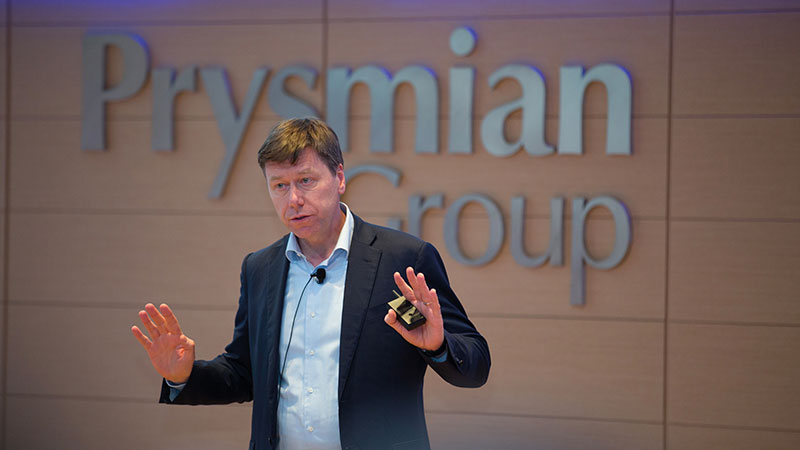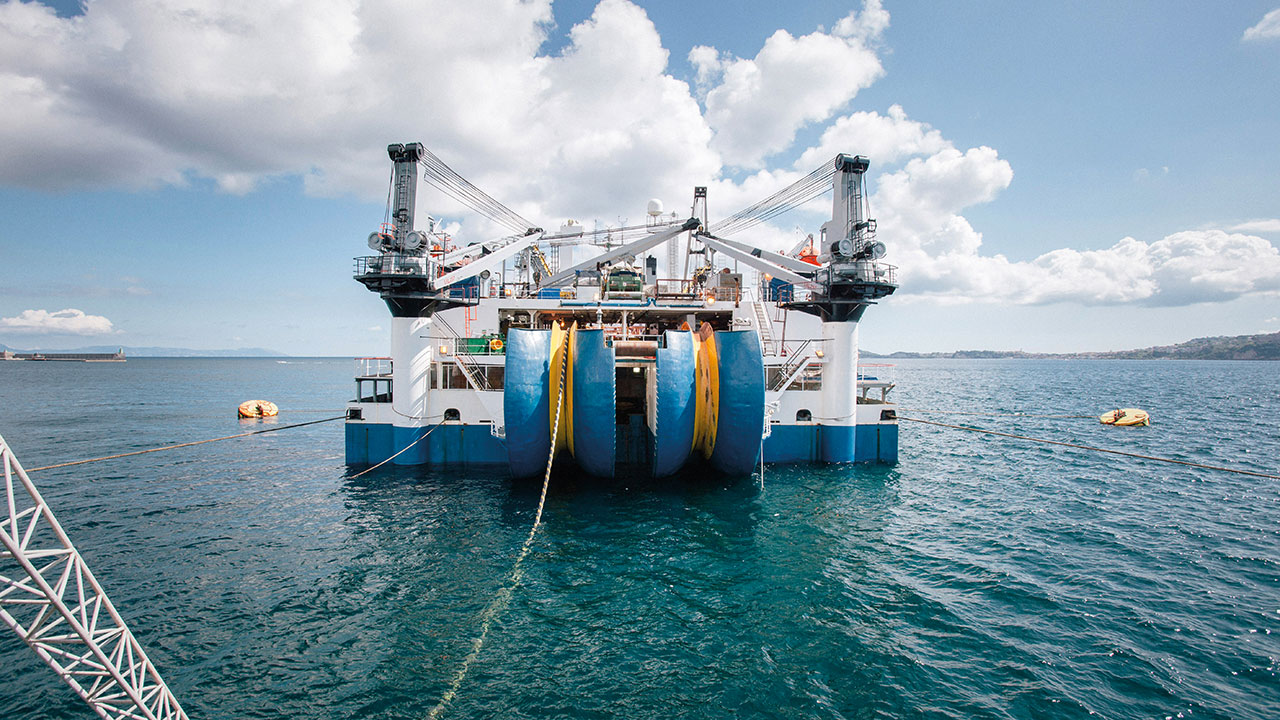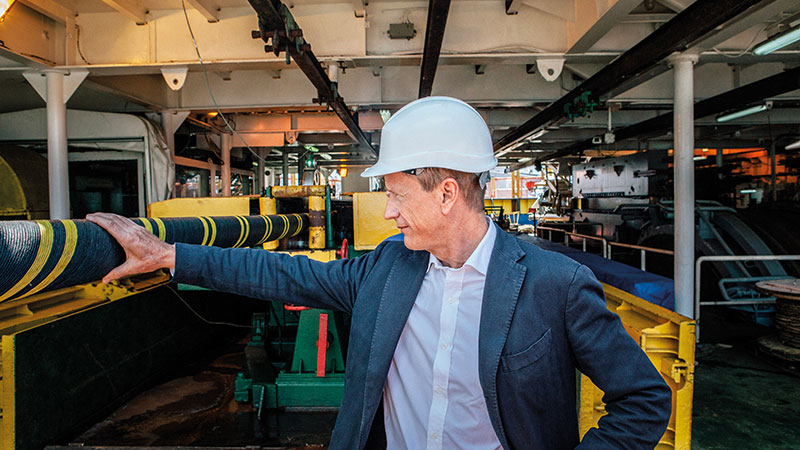Fibre to support the 5g revolution
Doing business
Fibre to support the 5g revolution
Prysmian Group will supply Verizon with more than 17 million fibre kilometres of ribbon and loose tube cables, to support a carrier programme to deliver 5G to its customers in the US.
$300 million supply agreement with the US telecom company Verizon
5G is closer to becoming a reality in the U S, and Prysmian is one of the key players involved in the development of the country’s fifth-generation mobile network.
As the world leader in the energy and telecom cable systems industry, the Group has been awarded a $300 million supply agreement from the US telecom company Verizon Communications to support its US network expansion around a next-generation fibre platform that will speed the deployment of 5G services, while improving 4G LTE and other broadband capacity.
For the three-year contract agreement Prysmian will supply Verizon with more than 17 million fibre kilometres of ribbon and loose tube cables. As a further step in its plan to commercialise gigabit broadband services to homes and offices via a wireless 5G connection, Verizon last month began to pilot test a new super-fast wireless service with customers in 11 US cities on its newly built 5G network. So what will this mean? Customers can download a full HD movie onto a mobile device in less than ten seconds or run high-resolution video with next-wave content like augmented and virtual reality, for example. 5G performs more than 40 times faster compared to 4G and will handle data-intensive applications far more smoothly.
As one of the leading companies committed to allowing customers to take advantage of this new technology, Verizon has identified 5G-fixed wireless access as the first phase of deploying next-generation networks. Yet, as explained by Philippe Vanhille, SVP Telecom at Prysmian Group: “As the world goes wireless, wireless is drawn to fibre. Economic growth and consumer demand depend largely on super-fast, gigabit broadband connectivity that is always available. We believe this is best delivered over a fixed optical network”.
Indeed, both Prysmian and Verizon strongly feel that demand and supply for next-generation passive optical network (NG-PON2) will last well beyond 2020 as new technologies like the Internet of Things (IoT) and 5G become a reality.
Contributing to the complete realisation and full connectivity of the IoT – probably the most revolutionary evolution of digital technologies to date – is one of Prysmian’s main tasks over the next decade. It’s a natural next step for a company already used to making ‘things’ connect to and interact with each other, and one already focusing on the development of a new IoT-compliant manufacturing execution system (MES) with the long-term goal of optimising the production process and entering into the field of Big Data.
Prysmian Group’s telecom division has supplied Verizon with optical fibre, optical cable and connectivity solutions for more than a decade. This rejoining of forces will no doubt also help to set new milestones for further enhancements to mobile connectivity.
“As a recognised leading global producer of optical cables, supporting the most advanced infrastructure of many of the world’s telecom operators, Prysmian Group is proud to have been chosen by Verizon as partner for the development of such a strategic project”, Hakan Ozmen, CEO of Prysmian Group North America comments. To this end, to support this project and the growth of major telecoms carriers in North America, the Group will make significant investments in its US optical cable organisation, where it already has three telecom production sites two for the production of optical cable, and one for optical fibre.
Customers can download a full HD movie onto a mobile device in less than ten seconds or run high-resolution video with next-wave content like augmented and virtual reality, for example. 5G performs more than 40 times faster compared to 4G and will handle data-intensive applications far more smoothly.

“As the world goes wireless, wireless is drawn to fibre. Economic growth and consumer demand depend largely on super-fast, gigabit broadband connectivity that is always available. We believe this is best delivered over a fixed optical network”.
CONTRIBUTING TO UK AND FRANCE POWER SUPPLY
A new interconnector awarded to Prysmian by IFA2 will allow up to 1,000 MW to be transmitted between the countries.

€350 million contract awarded for the France-UK interconnection
After having secured the first ever French submarine p ower cable link for offshore wind farms to connect offshore wind electricity to the country’s mainland grid, Prysmian Group has secured a major new contract worth around €350 million for a France-UK connection. The project was awarded by IFA2 SAS, a joint venture between the UK National Grid and RTE of France.
Prysmian will provide the turnkey design, manufacture and installation services for a submarine and land power cable link to connect Tourbes in France to Chilling in Hampshire, UK.
In addition to this High Voltage Direct Current (HVDC) cable link, the contract includes a High Voltage Alternating Current (HVAC) link that will connect the converter station to a local substation in Chilling, with 2 km land sections at each end, and a 5 km subsea section in-between. The HVDC interconnection will operate at ± 320 kV DC and will allow up to 1,000 MW of power to be transferred between the countries. The HVDC cable system comprises approximately 25 km route length in France, running from the Tourbes converter station in Northern France to the landing point close to Caen.
The subsea cables will be manufactured at Prysmian’s production facility in Pikkala, Finland, and the land cables at Gron, France.
Installation of the land sections will also involve the resources and facilities of Prysmian France and Prysmian UK, headquartered in the nearby area. The Prysmian cable-laying vessels Cable Enterprise and Ulisse will conduct the installation.
The 1,000 MW HVDC electrical interconnector will reduce the cost of electricity for homes and businesses in Great Britain, while increasing the security of electricity supplies for both countries and providing opportunities for shared use of renewable energy. The project partners, National Grid and Réseau de Transport d’Electricité (RTE), are planning to complete the construction of IFA2 and start operations in 2020.
Channel link
A new HVDC interconnector will increase power exchange between France and the UK via the Channel Tunnel.
The project was awarded by ElecLink to a consortium of Prysmian and Balfour Beatty and is worth €219 million. It’s one of the European Commission’s Projects of Common Interest and was awarded by a wholly owned subsidiary of Groupe Eurotunnel. The project will focus on building an interconnector through the Channel Tunnel to provide a power transmission link between the UK and France with a capacity of a 1,000 MW in either direction. Prysmian’s share for coordinating the design, supply, installation and commissioning of the interconnection will be around €79 million. “The development of power transmission interconnections is of paramount importance in Europe and we are proud to make our technologies and experience available for the realisation of a project with such a high strategic value,” said Massimo Battaini, Energy Projects Senior Vice President at Prysmian Group.
The ElecLink HVDC cable link will increase the energy exchange between France and the UK, contributing to the integration of energy markets and enabling the diversification of energy sources. The ElecLink interconnector will provide cost-effective additional power transmission capacity with minimal environmental impact thanks to the negated need for overhead lines and undersea cables, providing a carbon reduction of ~6.1 m tonnes.

“The development of power transmission interconnections is of paramount importance in Europe and we are proud to make our technologies and experience available for the realisation of a project with such a high strategic value”.
Eurasian cables
Prysmian Group Turkey has powered the first-ever undersea road tunnel connecting Asia and Europe.
This contribution to one of Turkey’s most important infrastructure projects was made thanks to the supply of high-tech MMS and telecom cables to the two local companies assigned to its design and construction, Yapı Merkezi and SK Engineering & Construction.
Prysmian supplied specially-designed cables for the tunnel boring machine used in the project, alongside around 200 km of FireTuf fibre optic cables, data cables (and related accessories), 15 km of Mobile network Coax leaky feeder cables and accessories used for the tunnel’s announcement system. A special outer sheath colour was also produced to match the tunnel’s interior. The tunnel’s communication system also uses nearly 200 km of special fire-resistant Prysmian-designed fibre cables.
Two years previously, Prysmian had supplied a special cable, known as TUNNELFLEX TX, to power the machine used to excavate the Eurasia Tunnel. This cable was produced at the Merlino plant in Italy and had many enhanced features, including flexibility, high impact-resistance and the ability to be rolled and unrolled multiple times.
JOURNEYING BETWEEN TWO CONTINENTS
The Eurasia Tunnel totals a distance of 14.6 km and consists of three sections. The most important part of the project is the 3.4 km-long Bosphorus Passage. Approximately 2 million cubic metres were excavated in the project, while 700 thousand cubic metres of concrete and 70 thousand tons of iron were used. The tunnel can only be used by minibuses and cars and has been designed to withstand an earthquake of 7.5 magnitude.
